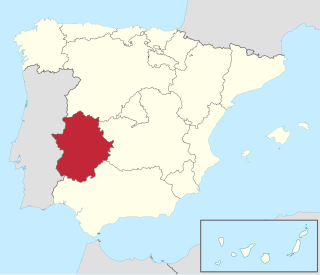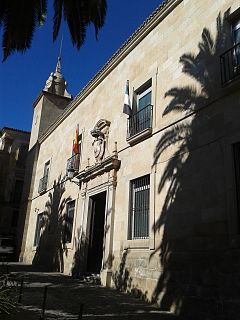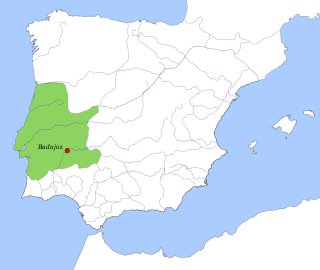 W
WExtremadura is an autonomous community of Spain. Its capital city is Mérida. Located in the central-western part of the Iberian Peninsula, it is made up of the two largest provinces of Spain: Cáceres and Badajoz. Extremadura is bordered by Portugal to the west and by the autonomous communities of Castile and León (north), Castilla–La Mancha (east) and Andalusia (south). Its official language is Spanish.
 W
WThe coat of arms of the Extremadura is described in the Title I of the Spanish Law 4 of June 3, 1985, the Law of the coat of arms, flag and regional day of Extremadura.
 W
WThe flag of Extremadura, according to Article 4-1 of the Statute of Autonomy, consists of three horizontal stripes of green, white, and black. The state flag, used by the government and administration, must use the variant with the coat of arms of the region off-centred toward the hoist.
 W
WGranadilla is a ghost town in Spain. It is located in Extremadura. Since 1960 it belongs to Zarza de Granadilla's municipality. On June 24, 1955 its citizens had to leave when the Spanish Council of Ministers built a reservoir. Currently, the area is a summer campsite for young people and tourists.
 W
WThe High Court of Justice of Extremadura is the highest body and last judicial instance of the Spanish judiciary in Extremadura. Unlike the Assembly of Extremadura or the Government of Extremadura, the TSJEx is not a part of the Junta de Extremadura, the autonomous system of self-government of the community, although the Extremaduran government has some powers over it, especially in material resources.
 W
WThis is a list of Sites of Community Importance in Extremadura.
 W
WThe Taifa of Badajoz was a medieval Islamic Moorish kingdom located in what is now parts of Portugal and Spain. It was centred on the city of Badajoz which exists today as the first city of Extremadura, in Spain.